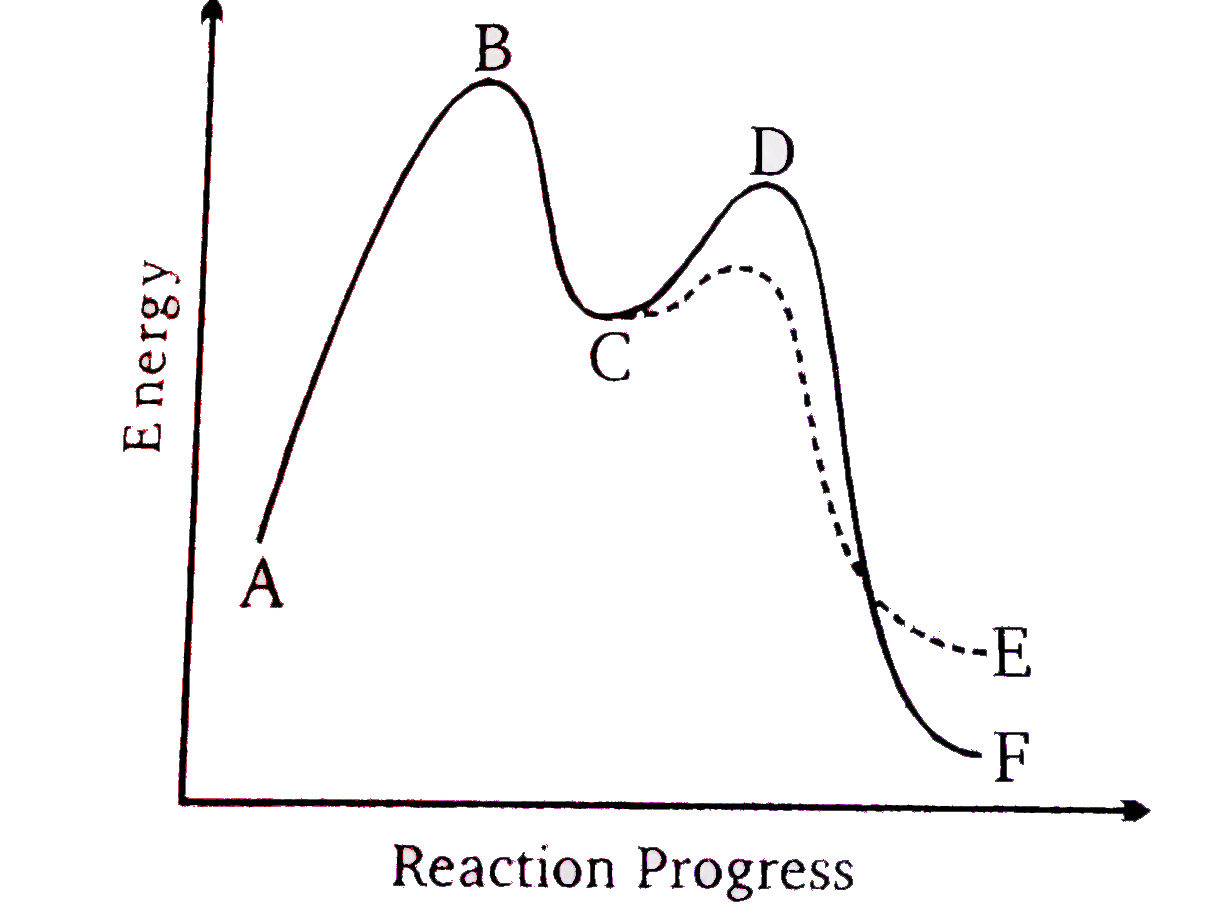
Consider the above reaction and answer A to E.
Which step is rate determining step?
attack of nucleophile CH3OH
attack of electrophile H⊕
attack of nucleophile H2O
attack of electrophile CH3
The correct Answer is:B
b
Topper's Solved these Questions
- HYDROCARBONS (ALKENES)Book:MS CHOUHANChapter:HYDROCARBONS (ALKENES)Exercise:Level 1 (Q.1 To Q.30)
Explore 1 Video
- HYDROCARBONS (ALKENES)Book:MS CHOUHANChapter:HYDROCARBONS (ALKENES)Exercise:Level 1 (Q.61 To Q.90)
Explore 2 Videos
- HYDROCARBONS (ALKANES)Book:MS CHOUHANChapter:HYDROCARBONS (ALKANES)Exercise:Level 1 (Q.31 To Q.50)
Explore 1 Video
- HYDROCARBONS (ALKYNES)Book:MS CHOUHANChapter:HYDROCARBONS (ALKYNES)Exercise:Level 1 (Q.1 To Q.30)
Explore 2 Videos
Similar Questions
Knowledge Check

Consider the above reaction and answer A to E.
What is electrophile in second step?A⊕CH3BH⊕CCH3−CH2−⊕CH−CH3DCH3−CH2−CH2−⊕CH2
Consider the above reaction and answer A to E.
What is electrophile in first step?A⊕CH3BH⊕CCH3−CH2−⊕CH−CH3DHO⊕
Consider the above reaction and answer A to E.
What is nucleophile in second step?ACH3−CH2−CH=CH2BCH3OHCH2ODCH3−O−CH3
Consider the potential energy diaram given below

(X) Name the positions A-D
(Y) Answer the following questions .
(I) Both reaction pathways are.
(II) which step is the rate determine step?
(III) which product is most stable ?
(iv) In accordance with Hammonds potulate , exothermixc reaction tend to have
View SolutionThe conversion of aldehyde having no alpha hydrogen to a mixture to a mixture of carboxylic acid and primary alcohol is known as cannizzaro reaction. The most important feature of this reaction is the conjugates base of hydrate aldehyde.

Which step is rate determine step
View SolutionAlldehydes and Ketones react with NH2OH to form aldoximes and Ketoximes respectively. Configuration of these can be determined by Beckmann rearragement as that group migrates which is anti w.r.t -OH

Which step is Rate determening step ?
View SolutionGiven the hypothetical reaction mechanism
 E and the rate as The rate determining step is
E and the rate as The rate determining step is
View SolutionConsider the following reactions and answer A and B .

Yield of each step as actually carried out in laboratory is given above each arrow . What is overall yield of the reaction ?
View Solution



